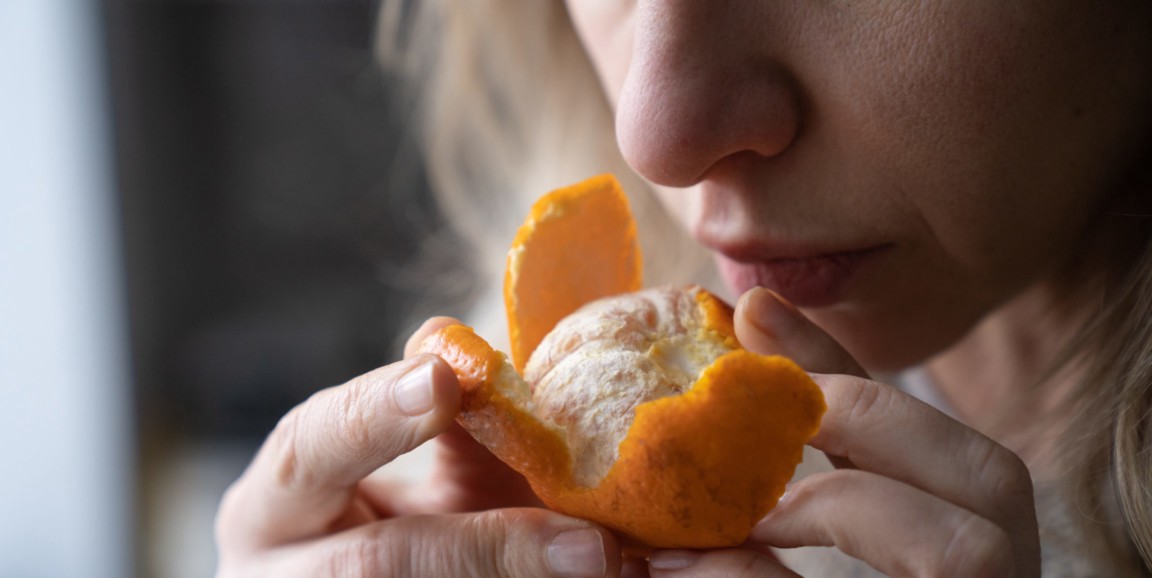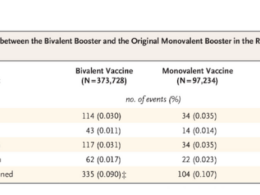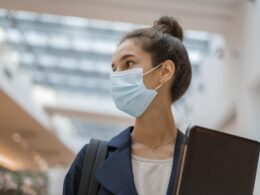NEJM Journal Watch
Rahul B. Ganatra, MD, MPH, reviewing
August 25, 2022
Site editor:
Joaquim Cardoso MSc.
health transformation — journal
September 18, 2022
About 5% of people who lost smell or taste had persistent dysfunction at 6 months.
Two and a half years into the pandemic, a clearer understanding of the natural history of COVID-19-associated smell and taste dysfunction finally is emerging.
Three groups have evaluated the timeline of such dysfunction.
In a meta-analysis, researchers combined data from 18 observational studies of patients with COVID-19-associated smell and taste dysfunction to determine the time course of recovery and identify risk factors for persistence.
Data from 3700 patients (collected before emergence of Omicron) were included.
Included studies varied widely in methodology and setting; most relied on self-report.

Key findings were:
- Among patients reporting loss of smell, the proportions who recovered by day 30, 60, 90, and 180 were 74%, 86%, 90%, and 96%, respectively.
- Among patients reporting loss of taste, the proportions who recovered by day 30, 60, 90, and 180 were 79%, 88%, 90%, and 98%, respectively.
- Persistent dysfunction in smell and taste at 6 months were reported in 5.6% and 4.4% of patients, respectively.
- Women were less likely to recover smell and taste than were men.
- Patients with nasal congestion and more-severe smell dysfunction were less likely to recover.
Among patients reporting loss of smell, the proportions who recovered by day 30, 60, 90, and 180 were 74%, 86%, 90%, and 96%, respectively.
… about … loss of taste, the proportions who recovered by day 30, 60, 90, and 180 were 79%, 88%, 90%, and 98%, respectively.
Persistent dysfunction in smell and taste at 6 months were reported in 5.6% and 4.4% of patients, respectively.
Citations, Authors & Affiliations:
Tan BKJ et al. Prognosis and persistence of smell and taste dysfunction in patients with covid-19: Meta-analysis with parametric cure modelling of recovery curves. BMJ 2022 Jul 27; 378:e069503. ( https://doi.org/10.1136/bmj-2021-069503. opens in new tab )
Benjamin Kye Jyn Tan, house officer1,
Ruobing Han, house officer1,
Joseph J Zhao, house officer1,
Nicole Kye Wen Tan, medical student1,
Emrick Sen Hui Quah, house officer1,
Claire Jing-Wen Tan, medical student1,
Yiong Huak Chan, founding mentor of Biostatistics Unit2,
Neville Wei Yang Teo, assistant professor of otolaryngology34,
Tze Choong Charn, assistant professor of otolaryngology345,
Anna See, assistant professor of otolaryngology345,
Shuhui Xu, consultant otolaryngologist34,
Nikita Chapurin, chief resident of otolaryngology6,
Rakesh K Chandra, professor of otolaryngology6,
Naweed Chowdhury, assistant professor of otolaryngology6,
Rafal Butowt, assistant professor of physiology and cell biology7,
Christopher S von Bartheld, professor of physiology and cell biology8,
B Nirmal Kumar, professor of otolaryngology910,
Claire Hopkins, professor of rhinology1112,
Song Tar Toh, associate professor of otolaryngology34
Author affiliations
1Yong Loo Lin School of Medicine, National University of Singapore, Singapore
2Biostatistics Unit, Yong Loo Lin School of Medicine, National University of Singapore, Singapore
3Surgery Academic Clinical Program, SingHealth, Singapore
4Department of Otorhinolaryngology-Head and Neck Surgery, Singapore General Hospital, Singapore
5Department of Otorhinolaryngology-Head and Neck Surgery, Sengkang General Hospital, Singapore
6Department of Otorhinolaryngology-Head and Neck Surgery, Vanderbilt University Medical Centre, Nashville, TN, USA
7Department of Molecular Cell Genetics, L Rydygier Collegium Medicum, Nicolaus Copernicus University, Bydgoszcz, Poland
8Department of Physiology and Cell Biology, School of Medicine, University of Nevada, Reno, NV, USA
9Wigan and Leigh Teaching NHS Foundation Trust, Wrightington, UK
10Edge Hill University Medical School, Orsmkirk, UK
11Department of Otorhinolaryngology-Head and Neck Surgery, Guy’s and St Thomas’ Hospitals, London, UK
12King’s College, London, UK
Cardoso CC et al. Olfactory dysfunction in patients with mild COVID-19 during Gamma, Delta, and Omicron waves in Rio de Janeiro, Brazil. JAMA 2022 Aug 9; 328:582. ( https://doi.org/10.1001/jama.2022.11006. opens in new tab )
Cynthia Chester Cardoso, PhD1;
Átila Duque Rossi, PhD1;
Rafael Mello Galliez, PhD2;
Débora Souza Faffe, PhD3;
Amilcar Tanuri, PhD1;
Terezinha Marta Pereira Pinto Castiñeiras, PhD2
Author Affiliations
- 1Instituto de Biologia, Universidade Federal do Rio de Janeiro, Rio de Janeiro, Brazil
- 2Faculdade de Medicina, Universidade Federal do Rio de Janeiro, Rio de Janeiro, Brazil
- 3Instituto de Biofísica Carlos Chagas Filho, Universidade Federal do Rio de Janeiro, Rio de Janeiro, Brazil
Boscolo-Rizzo P et al. Two-year prevalence and recovery rate of altered sense of smell or taste in patients with mildly symptomatic COVID-19. JAMA Otolaryngol Head Neck Surg 2022 Aug 4; [e-pub]. ( https://doi.org/10.1001/jamaoto.2022.1983. opens in new tab )
Paolo Boscolo-Rizzo, MD1,2;
Cristoforo Fabbris, MD3;
Jerry Polesel, ScD4;
Enzo Emanuelli, MD3;
Giancarlo Tirelli, MD2;
Giacomo Spinato, MD1;
Claire Hopkins, MA(Oxon)5
Author Affiliations
- 1Section of Otorhinolaryngology, Department of Neurosciences, University of Padova, Treviso, Italy
- 2Section of Otorhinolaryngology, Department of Medical, Surgical and Health Sciences, University of Trieste, Trieste, Italy
- 3Unit of Otolaryngology, AULSS 2-Marca Trevigiana, Treviso, Italy
- 4Unit of Cancer Epidemiology, Centro di Riferimento Oncologico di Aviano (CRO) IRCCS, Aviano, Italy
- 5Guy’s and St Thomas’ Hospitals, London, England, United Kingdom
Additional information:
See the original publication
Originally published at https://www.jwatch.org.












